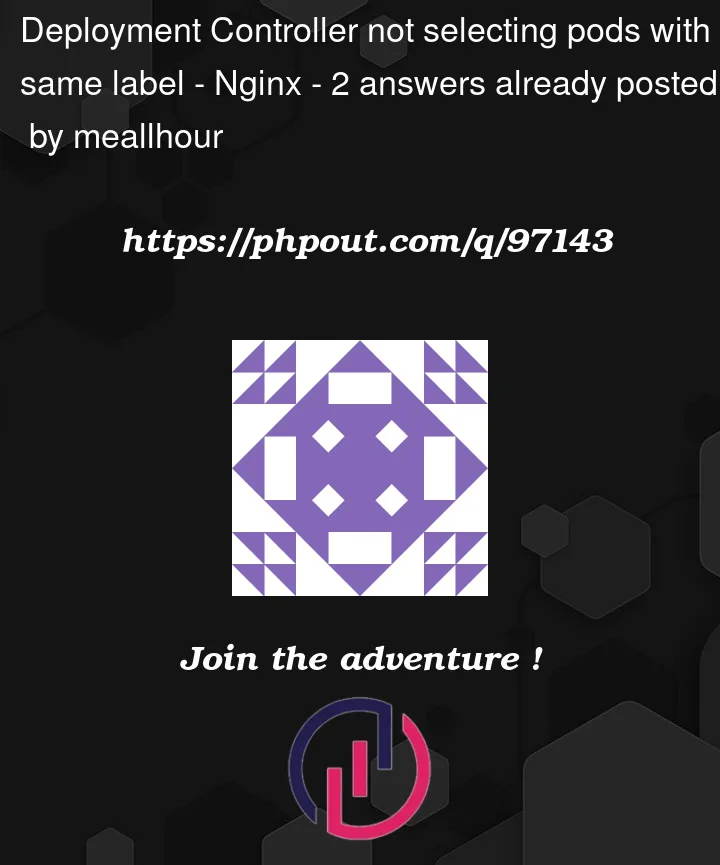I have created a pod using below yaml:
apiVersion: v1
kind: Pod
metadata:
name: pod2
labels:
app: dc1
spec:
containers:
- name: cont1
image: nginx
Now, I am creating a deployment controller with the selector value as app=dc1 using the below command:
kubectl create deploy dc1 --image=nginx
Note: When we create a deployment with the name "dc1", it automatically creates selector app=dc1 for the deployment controller.
I notice that the deployment controller creates a new pod instead of selecting the already existing pod.
NAME READY STATUS RESTARTS AGE LABELS
dc1-969ff47-ljbxk 1/1 Running 0 32m app=dc1,pod-template-hash=969ff47
pod1 1/1 Running 0 33m app=dc1
Question:
Why dc1 is not selecting the existing pod1 which has the same label app=dc1?




2
Answers
Why dc1 is not selecting the existing pod1 which has the same label app=dc1?Because pod1 was not originated by a deployment which spawn a replicaset that would add
pod-template-hashto the pod labels (which your standalone pod will not have). In your case of replicaset, you didn’t havepod-template-hashas part of itsselector.matchLabels. If you do add one, the replicaset will not select your standalone pod.If you check your replica set after deploying the deployment. You will notice a new label by the name pod-template-hash
It is generated by hashing the PodTemplate
If you define both labels on your pod, your pod then will be managed by Deployments.
But this is not recommended by the Kubernetes